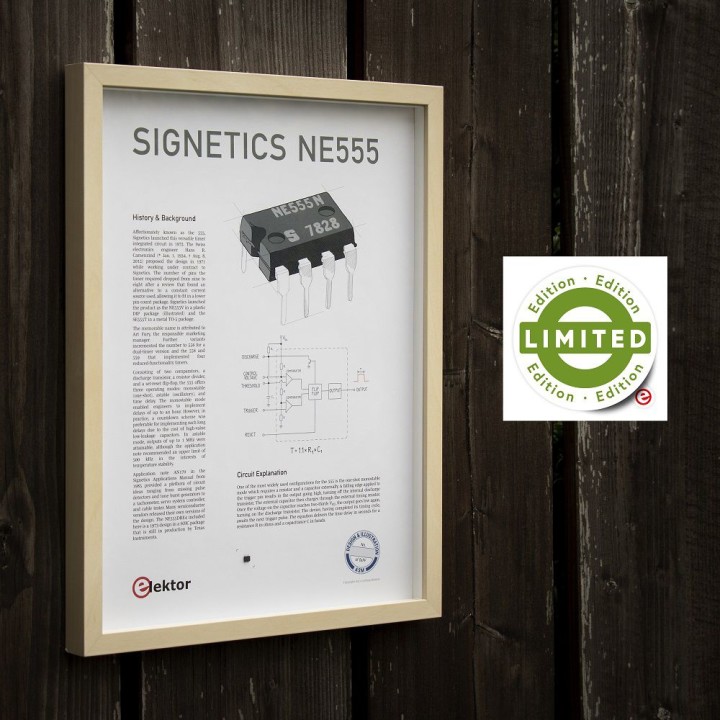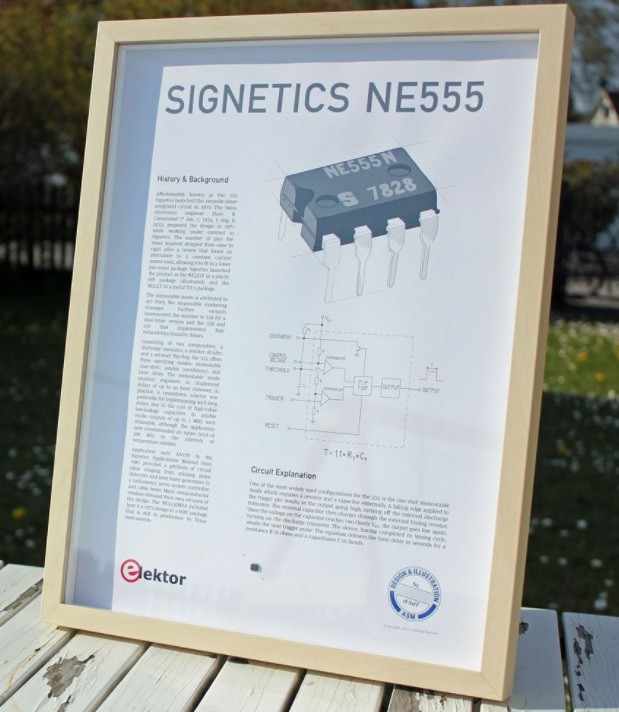Fifty Years of the 555 Timer IC
on

Time is a fascinating topic. Different cultures perceive time in different ways. In the US, "time is money." Southern European cultures seem to have a more elastic approach to time. In Japan, a rail operator caused an uproar when his train left 25 seconds early — the second such occurrence in six months! The Swiss are known for punctuality, watches, and cuckoo clocks. So, what happened when the Swiss emigre Hans Camenzind set about building the world's first integrated timer circuit, the 555 timer integrated circuit (IC), for a US semiconductor company?

A Little Background
The start of the 1970s was an exciting time for physicists and engineers in the fledgling semiconductor industry. The planar process had been invented, allowing complex circuits to be constructed on a single piece of silicon. Everyone was developing miniature circuits while simultaneously optimizing the manufacturing process. Hans Camenzind had been working as a researcher at P. R. Mallory, known for dry cell batteries, in the US. He moved to Signetics in 1968, a company formed in 1961 by a team of ex-Fairchild engineers. The founders had felt that Fairchild was too focused on transistors and that the future lay with integrated circuits.
In Switzerland, Camenzind had undertaken an apprenticeship to become a radio engineer. After emigrating to the US, he taught circuit design as he studied for a Master's in Business Administration. He understood the challenges of radio design and, having researched PLLs, managed to convince Signetics that they should build one when he joined them in 1968. This led to two products: the 565 and 566. These devices required an oscillator to function, using a resistor-capacitor circuit to set its frequency. In those days, the component tolerances in ICs were relatively high due to high variation in the manufacturing process. Thus, the design of the oscillator needed to be invariant to these inaccuracies, as well as temperature and supply voltage.
Signetics Stumbles
During the 60s, Signetics had built up a strong portfolio of linear ICs, such as operational amplifiers and phase-locked loops (PLL), and a good collection of digital logic devices. They'd become the standard in many devices, and Fairchild, who had since decided ICs were worth pursuing, had copied many of their designs. Towards the end of the 1960s, they were in financial difficulty due to trying to compete with Fairchild and others. Camenzind had been developing PLLs but became disillusioned with his role as his employer seemingly stumbled, despite its engineering advantage. He left in 1971 with plans to write a book, leaving the door open to continue working for them as a design consultant.
The oscillator used for the PLLs seemed, in Camenzind’s eyes, to have the making of a product in its own right. His first consulting project proposed an oscillator design to Signetics that could also function as a timer. Some felt unsure about proceeding as the design could potentially impact the sales of other devices in the product lineup, such as op-amps. However, the other personality in this story, Art Fury, a marketing manager, felt that the product was worth building. Fury was unusual amongst marketing people in that he had a lab at home, could build circuits, and had a natural feel for the market.
Time for an Oscillator
Camenzind got on with designing his oscillator, albeit at a lower income than he’d had previously as an employee. However, due to the biting recession of the 1970s, Signetics had laid off a substantial portion of their engineering team. This left unused equipment in the lab that they lent him to work on his design.
The final product consisted of two comparators, a discharge transistor, a resistor divider, and a set-reset flip-flop, which offered three operating modes: monostable (one-shot), astable (oscillatory), and time delay. The frequency or time delay was configured using just a resistor and a capacitor. The monostable mode enabled engineers to implement delays of up to an hour. However, in practice, a countdown scheme was preferable for implementing such long delays due to the cost of high-value low-leakage capacitors. In astable mode, outputs of up to 1 MHz were attainable. However, application note AN170 in the Signetics Applications Manual from 1985 recommended an upper limit of 500 kHz in the interests of temperature stability.
555: Marketing Genius
The memorable product name 555 is attributed to Fury, who chose it arbitrarily. Despite this, many texts and resources still wrongly link the name to the use of three 5 kΩ resistors in the circuit. It was launched in 1972 in an eight-pin plastic DIP (NE555V) for the commercial temperature range and a metal TO5 can (SE555T) for the military temperature range. By the end of the year, National Semiconductor, Fairchild, and others had versions on the market. Later on, further variations were launched that integrated two timers (556) and four cut-down timers (558/559) in a single package.
The 555 still exists today in both its original bipolar design as well as in CMOS variants. There are even high-reliability variants (XTR650) built upon silicon-on-insulator (SOI) technology for operation over the -60°C to +230°C range. Its use has almost become a rite of passage for students on their journey into electronics and has been built into servo controllers, toys, space applications, and class-D amplifiers. The design is even available in kit form using discrete components.
So, what do you get when you mix a Swiss engineer with a US semiconductor conductor company? With billions of the chips estimated to have sold over the past 50 years, time(rs) and money!
Interested in the 555? NE555 Retro Electro Print
Elektor sells a Retro Electro print that celebrates an early Signetics integrated circuit. The NE555, designed by Hans Camenzind, has been a launching point for many electronics engineers and makers.
- Limited print run
- Featured Device: TI NE555DRE4 in SOIC package
- Certificate of Authenticity included
- Dimensions: 30 x 40 cm (11.8 x 15.7"). Frame not included.
Order yours today while supplies last!




Discussion (1 comment)
ElektroMaker 3 years ago